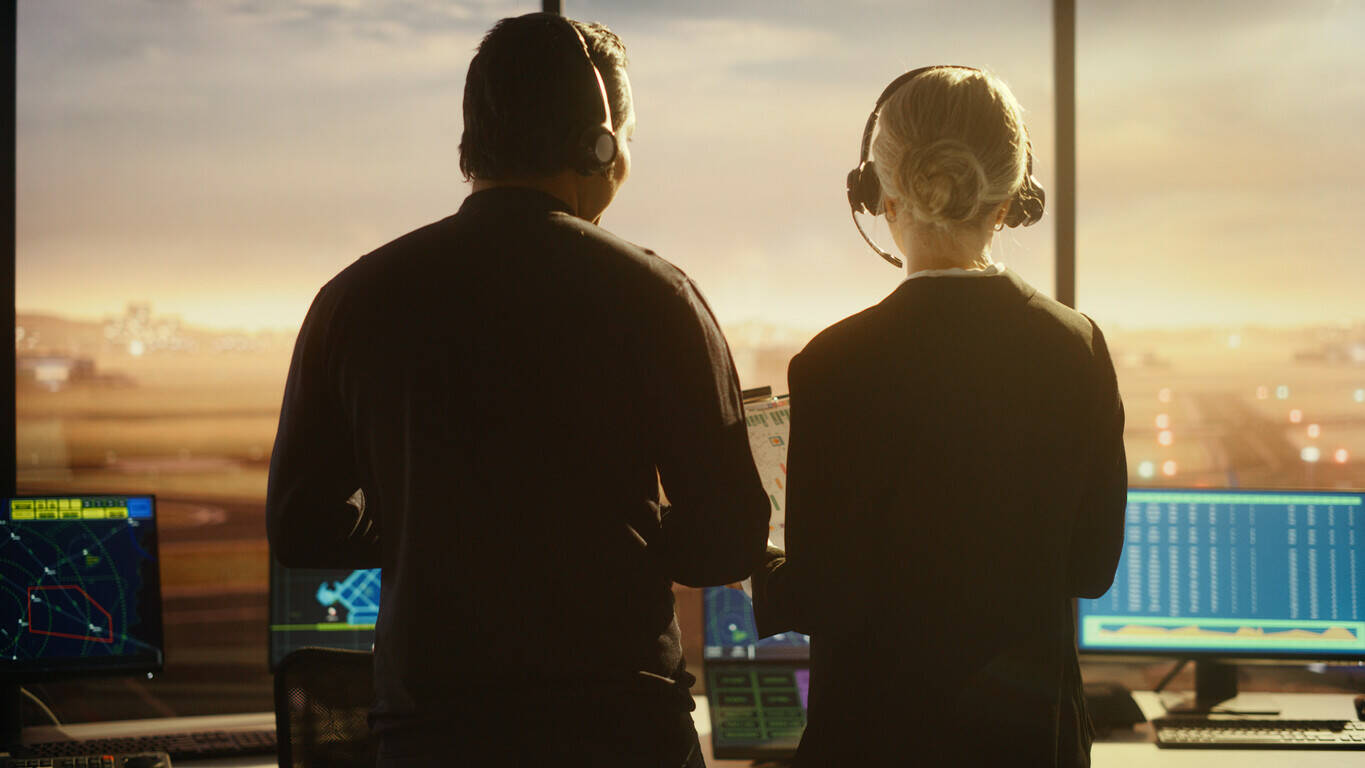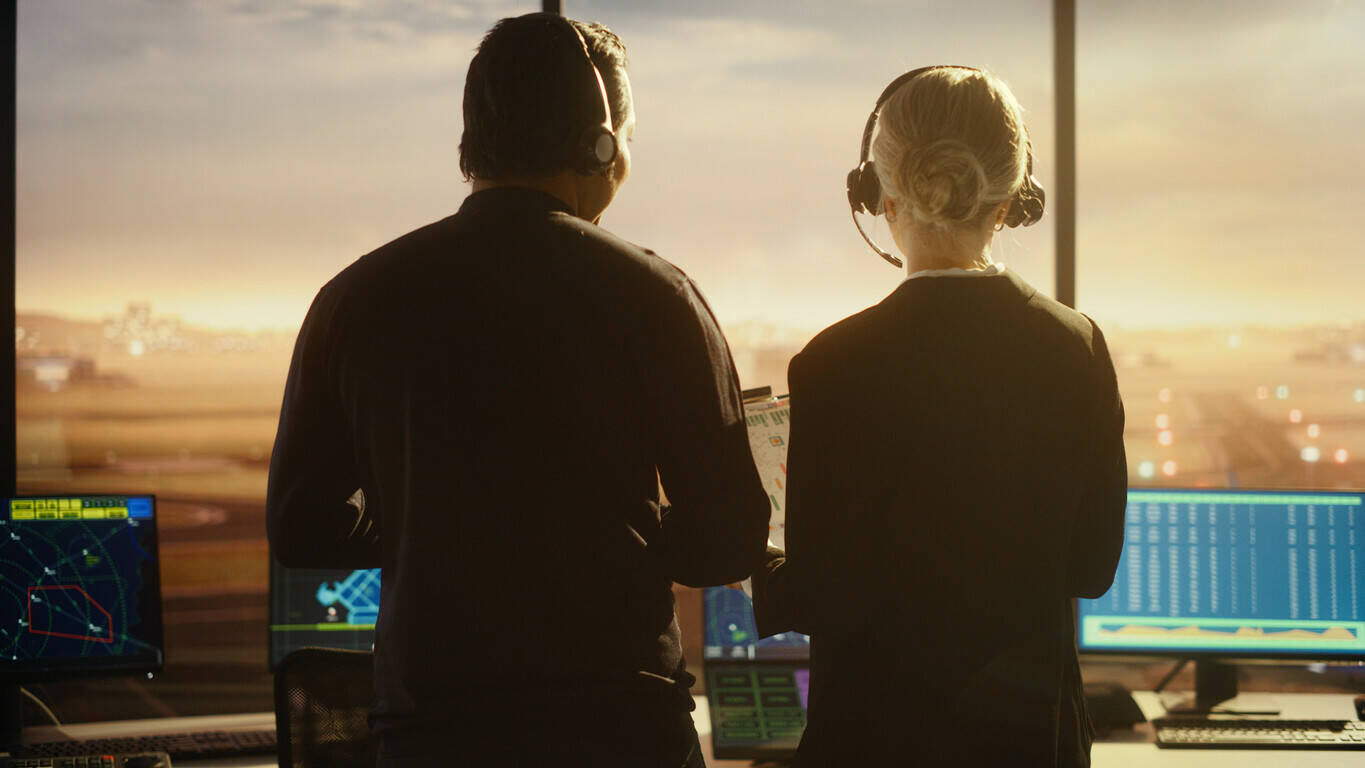Gabriela Logatto, President and CEO of EANA, says growth and innovation depend on diversity and inclusion.




Why is diversity important to the industry?
We need to understand the benefits of diversity in aviation. Inclusion and gender equality is not just the right thing to do in terms of supporting human rights, but good business sense. This is something important to underline. The benefits of diversity in aviation are clear. if we want to start a journey to a better industry, we need to start integrating different points of view. This will make us grow and become more innovative. It is a win-win scenario.
We need to create workspaces where we can express who we are and feel valued. At the same time, we have to guarantee equal career opportunities for everyone. When I became President, it was very important for me to create workspaces with a gender perspective because we know that equality makes us work better. So, I decided to create the Department of Gender and Equal Opportunities, which aims to develop all gender and diversity policies within the company. The roadmap to transform our company is known as EANA’s 2030 Equality Plan.
The aims of the plan are to guarantee equal opportunities, to ensure an environment free of any kind of violence and to promote the gender approach throughout the company. We have already initiated many projects, including a help channel available 24 hours a day and strictly confidential for all workers, a non-sexist communication style, and mandatory training in combating gender violence for all our staff.
It is vital to develop a culture where every voice matters. There are substantial benefits and the opportunity to enhance aviation safety if we embrace diversity, inclusion and equality.

What new technologies most excite you?
The ability to virtualise services gives us many advantages. That is, technology that does not depend on physical infrastructure.
As a former air traffic controller, I am enthusiastic about everything that improves our operational quality of life. Only the controllers can properly express what happens when something doesn’t work.
We should think of ANSPs as technology companies that provide air traffic control services.
How is CANSO supporting work in the region?
During the pandemic, we have experienced and participated in an increase in collaboration at a regional and global level through CANSO. We have used the CANSO network to share best practice, exchange information and participate in regional webinars.
Exchanging best practice has proved to be so valuable and supportive. Through CANSO´s programmes, we shared knowledge, learned from each other and resolved issues on important global matters.
In our region, we have the CANSO ATFM Data Exchange Network for the Americas (CADENA), where EANA serves as the vice-chair. CADENA was created in 2016, and since its creation we have increased the level of participation from ANSPs and airlines. There are now 16 ANSPs, 21 airlines, the FAA Space Operations Office and the French Space Agency sharing information at weekly teleconferences.
Being part of the CADENA initiative has been essential for us, especially while the entire world was buzzing with uncertainty and questions during the spread of the virus. From the very first stages, the CADENA team has been providing support and solidarity to ANSPs and stakeholders alike, by ensuring clear and accessible information to the aviation community. COVID-19 restriction updates are shared with CADENA members on a daily basis.
CANSO is the bridge to collaboration and that is why its contribution is enormous.
How important is it for ANSPs to collaborate and what work is EANA doing in this regard?
It is extremely important. It is always better when we can take advantage of situations that others have been through and learn from those experiences.
For example, the Brazilian ANSP DECEA helped us with the development of airspace design capacity. They transferred knowledge to us that enabled us to implement, in a short time, many RNP approaches, route redesign, capabilities and so forth.
Also, with Spanish ANSP ENAIRE, we shared visions of our communication networks during the design phase. They gave us a lot of input and helped us make better decisions.
In the same way, we are always open to being able to collaborate with whomever needs and requires it. Sharing is a fundamental pillar that strengthens us.
What are the main challenges for the region?
One of the great challenges is having well-prepared teams so that they can manage the services. Having accomplished that, everything is simpler.
It seems basic but the provision of energy and the data network is a challenge in our region since the technologies require robustness of both. Beyond this, I think it would be good to be able to work in a more integrated way, understanding the roadmap of each ANSP.
There are many aviation-related regulations coming into force in Argentina. What is your view of the regulatory environment?
It is important to note that I have been part of the aeronautical authority (ANAC) in Argentina for almost five years, and that in 2014 I firmly supported the creation of the Regional Air Navigation Services Regulations.
The regulatory framework for air navigation services is of great importance, and we understand that the best way is to do it collaboratively with all those involved; the Civil Aviation Authority, ANSP, airport authorities, airlines, general aviation, and all the stakeholders.
At EANA, we are extremely careful about how regulation impacts the system, but we are always on the side where regulation contributes to strengthening safety and industry growth.
What are EANA’s main projects in 2022?
We have advanced in several projects related to robustness, redundancy and quality of service. Furthermore, we are also planning to undertake services that, until now, were in the hands of third parties and not achieving very good results.
The strategy focuses on four main pillars:
- Endowment:
In Argentina, there is a lack of air traffic controllers, so we had to develop a scholarship programme to provide a channel for training. - Training
We developed a new annual theoretical and practical training programme. - Building infrastructure
There is a comprehensive review programme for various towers, area control centres and data centres, which includes power and emergency services. - Technology
We are working on replacing several old voice communications, enabling two frequencies (primary and secondary) for all route sectors, replacing all communication links and implementing satellite links as backup.
We have implemented an ILS CAT III in Jorge Newbery Airport (the second busiest in Argentina) and replaced several other ILSs and VORs. We are also in the process of updating the ATM system and in a programme to update our sensors used for the surveillance service.
In our portfolio we have a total of 270 projects that are basically designed to improve the operational quality of life for our staff and customers.
How difficult was it to lead an ANSP through the crisis and what were the biggest challenges?
It was difficult, but what changed were the priorities.
On 13 March 2020, we convened the first board meeting to discuss COVID measures and decided to work around three fundamental principles; taking care of our employees, managing the regulations dictated by the Ministry of Health regarding flight restrictions, and maintaining operations, as we had many humanitarian and cargo flights.
During the first stage of the pandemic, our revenue fell 95%. This was a big challenge as we had an ambitious investment plan for technology and construction infrastructure, which for different reasons could not be postponed.
But we had to change the focus of the business and plan a new strategy that advanced certain projects that would have been very difficult in a pre-pandemic operation scenario. So, the pandemic was both good and bad.
We also realised that proactive, transparent and honest communication with our employees is one of the best tools we have. I believe that we need to focus on training, labour conditions, diversity, and equality. We must make sure we understand staff needs and guide them towards the new normal.

Read full article

Gabriela Logatto, President and CEO of EANA, says growth and innovation depend on diversity and inclusion.


How is CANSO supporting work in the region?
During the pandemic, we have experienced and participated in an increase in collaboration at a regional and global level through CANSO. We have used the CANSO network to share best practice, exchange information and participate in regional webinars.
Exchanging best practice has proved to be so valuable and supportive. Through CANSO´s programmes, we shared knowledge, learned from each other and resolved issues on important global matters.
In our region, we have the CANSO ATFM Data Exchange Network for the Americas (CADENA), where EANA serves as the vice-chair. CADENA was created in 2016, and since its creation we have increased the level of participation from ANSPs and airlines. There are now 16 ANSPs, 21 airlines, the FAA Space Operations Office and the French Space Agency sharing information at weekly teleconferences.
Being part of the CADENA initiative has been essential for us, especially while the entire world was buzzing with uncertainty and questions during the spread of the virus. From the very first stages, the CADENA team has been providing support and solidarity to ANSPs and stakeholders alike, by ensuring clear and accessible information to the aviation community. COVID-19 restriction updates are shared with CADENA members on a daily basis.
CANSO is the bridge to collaboration and that is why its contribution is enormous.

It was difficult, but what changed were the priorities.
On 13 March 2020, we convened the first board meeting to discuss COVID measures and decided to work around three fundamental principles; taking care of our employees, managing the regulations dictated by the Ministry of Health regarding flight restrictions, and maintaining operations, as we had many humanitarian and cargo flights.
During the first stage of the pandemic, our revenue fell 95%. This was a big challenge as we had an ambitious investment plan for technology and construction infrastructure, which for different reasons could not be postponed.
But we had to change the focus of the business and plan a new strategy that advanced certain projects that would have been very difficult in a pre-pandemic operation scenario. So, the pandemic was both good and bad.
We also realised that proactive, transparent and honest communication with our employees is one of the best tools we have. I believe that we need to focus on training, labour conditions, diversity, and equality. We must make sure we understand staff needs and guide them towards the new normal.
How difficult was it to lead an ANSP through the crisis and what were the biggest challenges?
We have advanced in several projects related to robustness, redundancy and quality of service. Furthermore, we are also planning to undertake services that, until now, were in the hands of third parties and not achieving very good results.
The strategy focuses on four main pillars:
- Endowment:
In Argentina, there is a lack of air traffic controllers, so we had to develop a scholarship programme to provide a channel for training. - Training
We developed a new annual theoretical and practical training programme. - Building infrastructure
There is a comprehensive review programme for various towers, area control centres and data centres, which includes power and emergency services. - Technology
We are working on replacing several old voice communications, enabling two frequencies (primary and secondary) for all route sectors, replacing all communication links and implementing satellite links as backup.
We have implemented an ILS CAT III in Jorge Newbery Airport (the second busiest in Argentina) and replaced several other ILSs and VORs. We are also in the process of updating the ATM system and in a programme to update our sensors used for the surveillance service.
In our portfolio we have a total of 270 projects that are basically designed to improve the operational quality of life for our staff and customers.
What are EANA’s main projects in 2022?
It is important to note that I have been part of the aeronautical authority (ANAC) in Argentina for almost five years, and that in 2014 I firmly supported the creation of the Regional Air Navigation Services Regulations.
The regulatory framework for air navigation services is of great importance, and we understand that the best way is to do it collaboratively with all those involved; the Civil Aviation Authority, ANSP, airport authorities, airlines, general aviation, and all the stakeholders.
At EANA, we are extremely careful about how regulation impacts the system, but we are always on the side where regulation contributes to strengthening safety and industry growth.
There are many aviation-related regulations coming into force in Argentina. What is your view of the regulatory environment?
One of the great challenges is having well-prepared teams so that they can manage the services. Having accomplished that, everything is simpler.
It seems basic but the provision of energy and the data network is a challenge in our region since the technologies require robustness of both. Beyond this, I think it would be good to be able to work in a more integrated way, understanding the roadmap of each ANSP.
What new technologies most excite you?
The ability to virtualise services gives us many advantages. That is, technology that does not depend on physical infrastructure.
As a former air traffic controller, I am enthusiastic about everything that improves our operational quality of life. Only the controllers can properly express what happens when something doesn’t work.
We should think of ANSPs as technology companies that provide air traffic control services.
What are the main challenges for the region?
It is extremely important. It is always better when we can take advantage of situations that others have been through and learn from those experiences.
For example, the Brazilian ANSP DECEA helped us with the development of airspace design capacity. They transferred knowledge to us that enabled us to implement, in a short time, many RNP approaches, route redesign, capabilities and so forth.
Also, with Spanish ANSP ENAIRE, we shared visions of our communication networks during the design phase. They gave us a lot of input and helped us make better decisions.
In the same way, we are always open to being able to collaborate with whomever needs and requires it. Sharing is a fundamental pillar that strengthens us.
How important is it for ANSPs to collaborate and what work is EANA doing in this regard?
We need to understand the benefits of diversity in aviation. Inclusion and gender equality is not just the right thing to do in terms of supporting human rights, but good business sense. This is something important to underline. The benefits of diversity in aviation are clear. if we want to start a journey to a better industry, we need to start integrating different points of view. This will make us grow and become more innovative. It is a win-win scenario.
We need to create workspaces where we can express who we are and feel valued. At the same time, we have to guarantee equal career opportunities for everyone. When I became President, it was very important for me to create workspaces with a gender perspective because we know that equality makes us work better. So, I decided to create the Department of Gender and Equal Opportunities, which aims to develop all gender and diversity policies within the company. The roadmap to transform our company is known as EANA’s 2030 Equality Plan.
The aims of the plan are to guarantee equal opportunities, to ensure an environment free of any kind of violence and to promote the gender approach throughout the company. We have already initiated many projects, including a help channel available 24 hours a day and strictly confidential for all workers, a non-sexist communication style, and mandatory training in combating gender violence for all our staff.
It is vital to develop a culture where every voice matters. There are substantial benefits and the opportunity to enhance aviation safety if we embrace diversity, inclusion and equality.
Why is diversity important to the industry?
